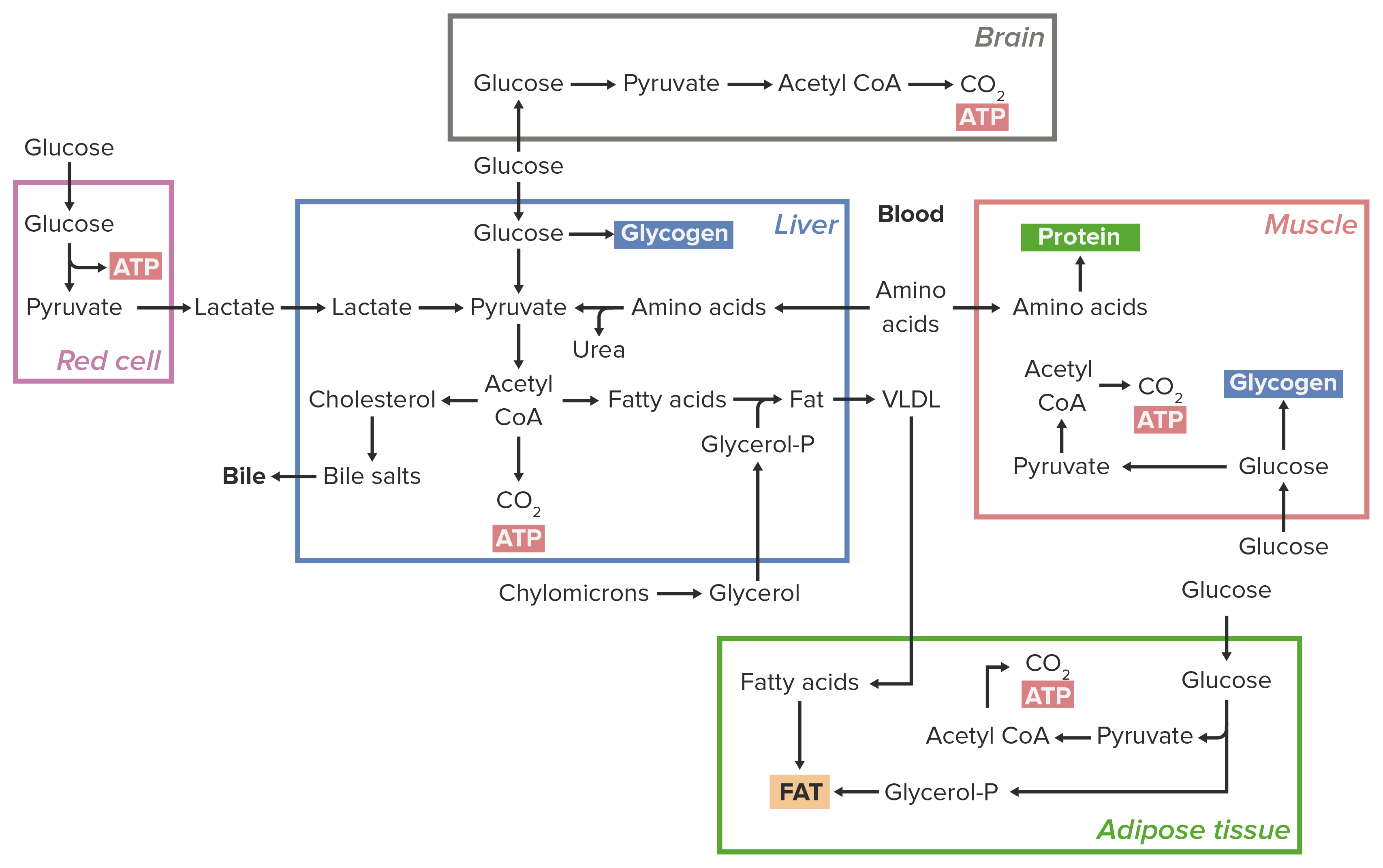Playlist
Show Playlist
Hide Playlist
Homeostasis – Launching Pad for Cell Biology
-
Slides 01 LaunchingPad CellBiology.pdf
-
Reference List Molecular and Cell Biology.pdf
-
Download Lecture Overview
00:00 So clearly cells have an internal environment and an external environment. 00:06 And they need to maintain that internal environment distinctly from the external environment in a consistent way. 00:14 So this is where we'll introduce the concept of homeostasis which we'll revisit regularly throughout the course. 00:22 In homeostasis, let's take the example of a house and your room temperature. 00:27 There's a stimulus. That stimulus would be heat. The heat is detected by the thermostat or the sensor in your home. 00:35 And that sensor will integrate that with what the set point should be for your house temperature. 00:41 And once the house temperature has been compared, if it's too cool or too warm. 00:46 We're going to have an effect. So the air conditioner or the heater are going to be the effectors which will either heat or cool the environment. And that change in environmental temperature itself is going to feedback on the sensor, and the sensor again will detect this in a cyclic manner. 01:07 And so there are two mechanisms for homeostasis. The predominant one in biological systems is the negative feedback loop. 01:15 However on occasion, we'll see a positive feedback loop. 01:20 Let's first take a look at a normal situation with negative feedback. 01:26 Negative feedback is what keeps most systems in biology in balance. 01:35 Let's now move on from the house example into a body temperature example. 01:41 In much the same way, we will have a stimulus. Perhaps, body temperature rises a little too much. 01:49 We need to keep that in pretty close check. So it's important that we have a sensor to detect that increase in body temperature. 01:57 This occurs in the hypothalamus. And the sensory neurons that are entering the hypothalamus are going to compare that information with the set point, the 37 degree C that our body should be maintained at. 02:09 Of course sometimes we increase or decrease a little bit around that but it's important that we keep it right around that set point so all of the enzymes work properly. 02:20 So if we're a little bit warm, the effect is that blood vessels will dilate. 02:25 We'll have vasodilation in the skin in order to shed some heat to the environment. 02:30 In which case, our body temperature will then drop, which is the response. 02:36 And that response then is detected by the sensor. 02:40 On the other end of the scale, perhaps we got a little bit too cold, in which case we don't want blood at the skin. 02:48 We would like the blood then to be shunted into the system, so we have vasoconstriction. 02:53 With the vasoconstriction, we may even get so cold that we need to shiver. 02:58 The shivering increases muscle activity which generates heat. And that increase in heat is the response. 03:07 And that response then feeds back to the sensor and shuts down all of the mechanisms that act to warm our body. 03:18 So in essence now, you can see that on both ends of the spectrum, there's a negative feedback loop where the response itself feeds back negatively to shut down production of whatever it is. 03:31 We could be managing blood sugar levels. We could be managing pH in the internal cellular environment. 03:38 Negative feedback is going to be the mechanism that helps all biological systems manage that There are very few examples of positive feedback in the human body. 03:51 One of them is blood clotting. Another one we'll look at here is the event of birth or parturation. 03:57 When a fetus is ready to be born, it pushed up against the cervix. 04:01 And the cervix is stretched and the sensory muscle fibers within the cervix will detect that stretching. 04:08 And that stimulus will be sent to the hypothalamus and integrated. 04:12 And the hypothalamus will then say "Well we need to have a secretion of oxytocin in order to have contractions, so that we can expel the baby." So that secretion of oxytocin is then detected by the sensor, more contractions happen which stimulates more oxytocin so on and so forth until we have so much oxytocin present that the baby is expelled. 04:35 And it's the expulsion of the baby that actually shuts down this positive feedback loop. 04:41 So you can see, a positive feedback loop doesn't really maintain anything. 04:45 It escalates, escalates, escalates. While in negative feedback loop, we'll regulate and keep things within homeostasis. 04:56 So hopefully this was a good introduction to where we're going in the course. 05:01 You'll be able to tell your friends and family what exactly it is that you're planning on learning in this course In addition to that, you'll have an idea of the relative scale of things that we're going to explore. 05:13 You know some of the differences between prokaryotes and eukaryotes, we'll explore this in much more detail later. 05:20 And finally, you recognize that homeostasis is critical to all living systems. 05:27 Thank you so much for listening to the introduction and I'll look forward to seeing you in future lessons.
About the Lecture
The lecture Homeostasis – Launching Pad for Cell Biology by Georgina Cornwall, PhD is from the course Introduction to Cell Biology.
Included Quiz Questions
Which of the following statements about homeostasis is FALSE?
- The negative feedback loop amplifies the stimulus and the positive feedback loop opposes it.
- The tendency of a living system to maintain a stable internal environment is called homeostasis.
- Homeostasis is a dynamic equilibrium between the exterior and interior of a cell to provide maximum stability to the living system.
- Homeostasis improves the chances of survival of an organism by inducing adaptive responses to stimuli from the external environment.
- Breakdown of the homeostasis system is a cause of disease.
How does the homeostasis system of the body counteract hypothermia?
- By vasoconstriction in the skin and shivering
- By vasodilation in the skin and sweat secretion
- By releasing oxytocin to cause uterine contractions
- By a positive feedback mechanism to cool the abdominal organs
- By increasing blood flow near the skin surface
Which of the following steps are part of the positive feedback loop during childbirth? Select all that apply.
- The fetus is pushed against the uterine opening.
- Oxytocin release leads to decreased uterine contractions.
- The brain receives stretch information from the uterus.
- The pituitary gland is stimulated to increase oxytocin secretion.
Customer reviews
5,0 of 5 stars
| 5 Stars |
|
4 |
| 4 Stars |
|
0 |
| 3 Stars |
|
0 |
| 2 Stars |
|
0 |
| 1 Star |
|
0 |
Concise and clear beginning in cell biology and homeostasis to warm up.
5 rating is what you deserve , i really liked the way you illustrate those key aspects
Me gusto mucho porque pude repasar el tema sobre la homeostasis.
Very good keeps on track with my textbook. Taking Intro Bio




